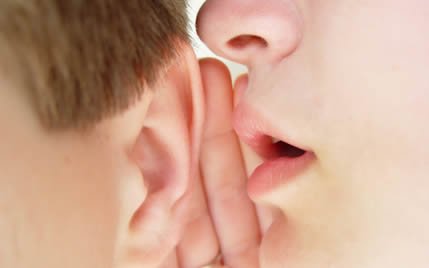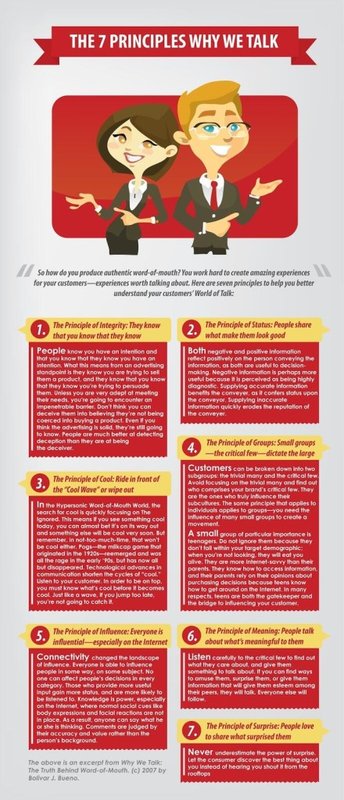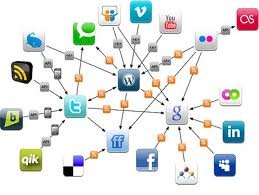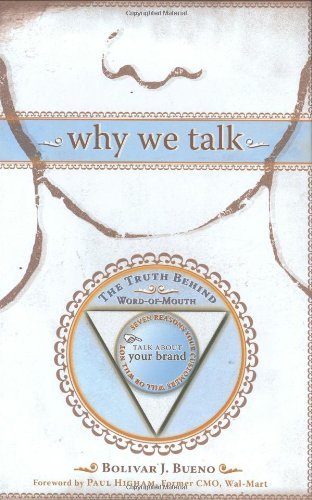Definition of ‘Word of Mouth’
1: the passing of information from person to person by oral communication
2: an important area of marketing is called word-of-mouth marketing, which relies on the added credibility of person-to-person communication, a personal recommendation.
3: storytelling is a common form of word-of-mouth communication where one person tells others a story about a real event or something made up.

Word of Mouth Meaning from a Marketing Perspective
Customers are very excited to share with the world the brands they love. Many consumers find meaning in sharing stories of their favorite products and services. Word of Mouth is one of the ancient ways people learned about what to purchase. Today modern marketers have learned how to create authentic word of mouth for their companies and the products they represent.
So how do you produce authentic word-of-mouth? You work hard to create amazing experiences for your customers—experiences worth talking about.

Cult Branding Company explains Word of Mouth
Here are seven principles to help you better understand how to get your customers to talk about your products and services:
1 – The Principle of Integrity: They know that you know that they know
2 – The Principle of Status: People share what makes them look good
3 – The Principle of Cool: Ride in front of the “Cool Wave” or wipe out
4 – The Principle of Groups: Small groups—the critical few—dictate the large
5 – The Principle of Influence: Everyone is influential—especially on the Internet
6 – The Principle of Meaning: People talk about what’s meaningful to them
7 – The Principle of Surprise: People love to share what surprised them
Source: Why We Talk: Seven Reasons Your Customers Will – Or Will Not – Talk About Your Brand
Word of Mouth Marketing (WOMM)
Five ways to create Word of Mouth Marketing:
- Don’t say every benefit about your business in every business communication. If everyone already knows everything about you, they won’t have anything to tell their friends that their friends don’t already know, aside from how you may not have fully met their expectations.
- Break a standard rule in your industry. Think back to the standard airline attire that flight attendants used to wear. Then Southwest Airlines breaks the rule and let’s their flight attendants wear shorts, a trademark feature of the airlines.
- Steal one from your customers. Listen in to what your customers are suggesting and surprise them by actually doing it.
- Create fun events your customers will want to be a part of and talk about. Think music festivals, BBQ’s, a simple lunch. Have fun. Enjoy bringing your customers together.
- Help your customers be generous. People like to give to others who need help but they also like to give to themselves. Think of promotions to help your customers help the world.
Viral Marketing
Cult Brand marketers are constantly creating new business ideas that keep their products in the heart and minds of the global consumer. Each time a new product is created, customers have to be given a reason to dream about their future purchase. Sometimes marketers of cult brands hit on some things so great that people can’t help and share and engage. Getting your customers talking about your product is very important to growing awareness of your business.
But how can you create viral marketing for your Business?
According to marketing professors Andreas Kaplan and Michael Haenlein, to make viral marketing work, three basic criteria must be met, i.e., giving the right message to the right messengers in the right environment. Three specific types of messengers are required to ensure the transformation of an ordinary message into a viral one.
Messenger:
- Market mavens are individuals who are continuously ‘on the pulse’ of things (information specialists); they are usually among the first to get exposed to the message and who transmit it to their immediate social network.
- Social hubs are people with an exceptionally large number of social connections; they often know hundreds of different people and have the ability to serve as connectors or bridges between different subcultures.
- Salespeople might be needed who receive the message from the market maven, amplify it by making it more relevant and persuasive, and then transmit it to the social hub for further distribution. Market mavens may not be particularly convincing in transmitting the information.
Message:
- Only messages that are both memorable and sufficiently interesting to be passed on to others have the potential to spur a viral marketing phenomenon. Making a message more memorable and interesting or simply more infectious, is often not a matter of major changes but minor adjustments.
Environment:
- The environment is crucial in the rise of successful viral marketing – small changes in the environment lead to huge results, and people are much more sensitive to environment. The timing and context of the campaign launch must be right.
The science behind viral word-of-mouth marketing :
Stories are the currency of communication, and the most effective content taps into deep-rooted social behavior while embedding memorable brand messages. Here you will find several key principles that retailers can use to promote powerful word-of-mouth sharing.
- Social currency – People love secrets, and since the things we say and share affect how others see us, juicy secrets make us look especially savvy. In an environment where our choices communicate things about us, retailers can help consumers advertise their own identity while talking about a brand. This particular approach is especially effective online, where consumers are carefully crafting their public personas.
- Triggers – Despite its questionable musical integrity, the music video for “Friday” by Rebecca Black sees a surge of YouTube activity each week … on Friday. Similarly, Cheerios gains more word-of-mouth mentions than a brand like Disney because cereal is a product that many people eat every day. If your product isn’t used regularly, find a way to tie it to a trigger that’s top-of-mind.
- Trojan horses – You’d never say “Did you know that Subway has five subs under five grams of fat?” to someone at a party. But people do talk about Jared’s famous weight loss story. Panda Cheese makes its advertising impossible to explain without mentioning the brand name. Will it blend?demonstrates the Blendtec blender’s main feature – power and durability – while entertaining with video stories that are begging to be retold. Just remembering the story isn’t enough. Ideally, each piece of content should track back to your brand.
The first step for retailers is to define key brand and product messages. After that, you can apply concepts like social currency, triggers, and Trojan horses to make those ideas stick. At every step of the way, authenticity is essential. Consumers can always tell when a brand is faking it. The trick is to be your best, most remarkable self.
Examples of Cult Brands using Word of Mouth
Word of mouth is the most powerful medium in marketing. Many brands try to tap into the power of word of mouth but only few achieve great results. Cult Brands are constantly using tactics to acquire positive word of mouth.
Here are 21 of the most powerful Cult Brands and how Word of Mouth has grown their business.
Want to learn more? Read more in Why We Talk a book about Word of Mouth and Word of Mouth Marketing.
Why We Talk: Seven Reasons Your Customers Will—Or Will Not—Talk About Your Brand
In Why We Talk, gifted marketing strategist and professional listener Bolivar J. Bueno dissects the evolution of word-of-mouth in the digital age and the unmistakable power shift that has taken place between marketer and consumer. Sharing one of the most insightful, organic concepts of this decade, Bueno bridges the monumental gap between the results business people want and the frustration they often get. (Also available in Kindle and audio.)



